Wildlife Watching in Yellowstone National Park.
Yellowstone National Park offers top-notch wildlife watching. Learn when and where to see bison, elk, wolves, and other iconic animals in stunning natural scenery.

Introduction
Yellowstone National Park is not just a haven for geothermal wonders and stunning landscapes; it's also one of the best places in the United States to observe wildlife in their natural habitats. With over 60 species of mammals, including some of the most iconic animals in North America, Yellowstone offers visitors an unparalleled wildlife-watching experience. From the majestic bison and elusive wolves to playful otters and soaring bald eagles, the park is a paradise for nature enthusiasts and photographers alike.
Overview of Wildlife Species Found in Yellowstone
Yellowstone's diverse ecosystems support a wide range of wildlife, making it one of the richest wildlife habitats in the world. Here are some of the most notable species you can encounter:
- Bison: Yellowstone is home to the largest population of wild bison in the United States. These massive creatures can be seen grazing in meadows, often in large herds.
- Elk: Another common sight in the park, elk are often spotted in valleys and near rivers. During the fall rut, their haunting bugles can be heard echoing through the forests.
- Wolves: Reintroduced to the park in 1995, the gray wolf has made a remarkable comeback. Although elusive, they can occasionally be spotted in the Lamar Valley, especially during the early morning or late evening.
- Grizzly and Black Bears: Both species of bears inhabit Yellowstone. Grizzlies are often seen in open areas in spring and fall, while black bears are more commonly found in forested regions.
- Coyotes and Foxes: These smaller predators are frequently spotted in the park. Coyotes are particularly common, often seen in open areas hunting for small mammals.
- Bald Eagles and Osprey: These majestic birds of prey can be seen soaring above rivers and lakes, often fishing for their next meal.
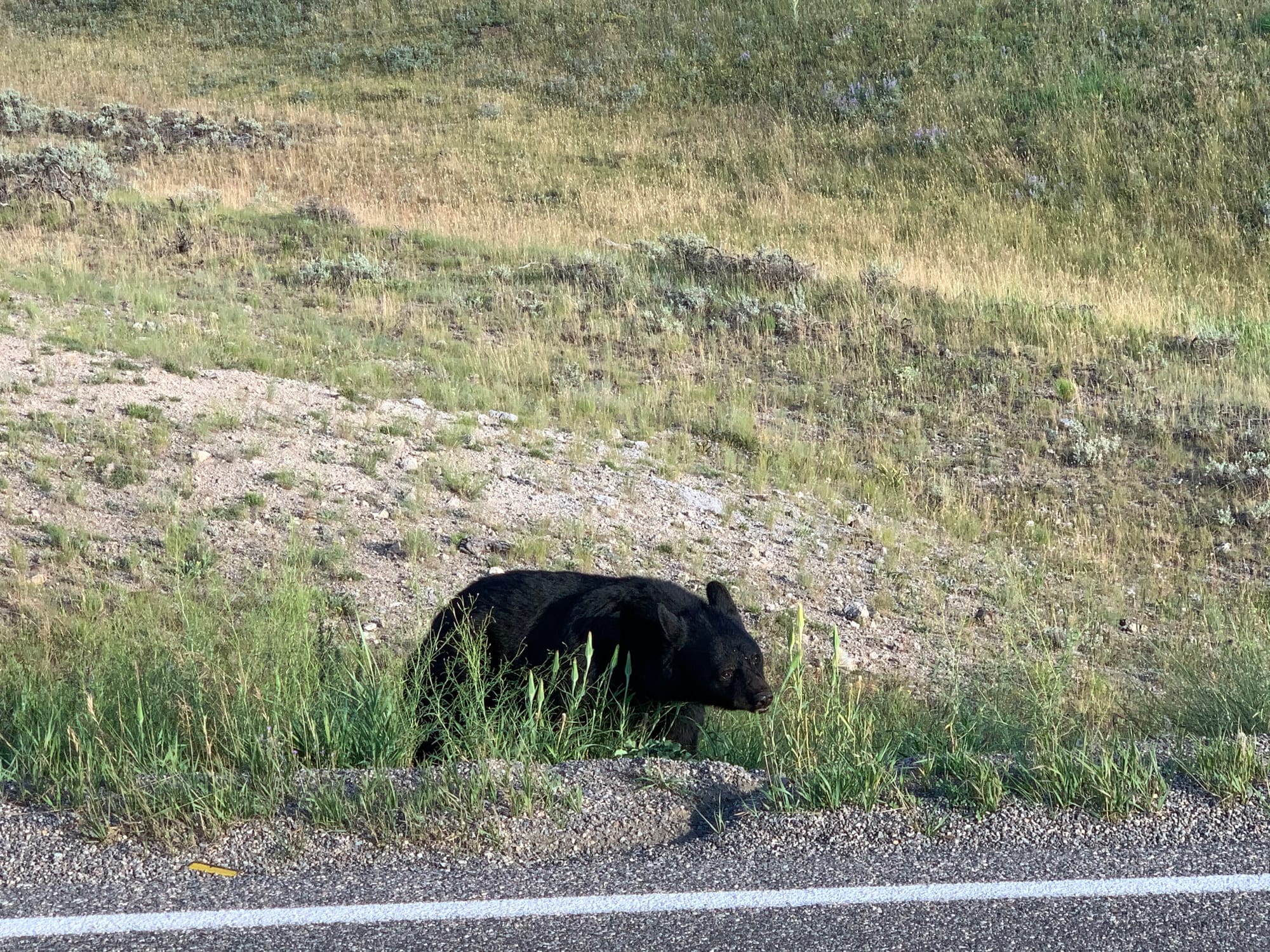
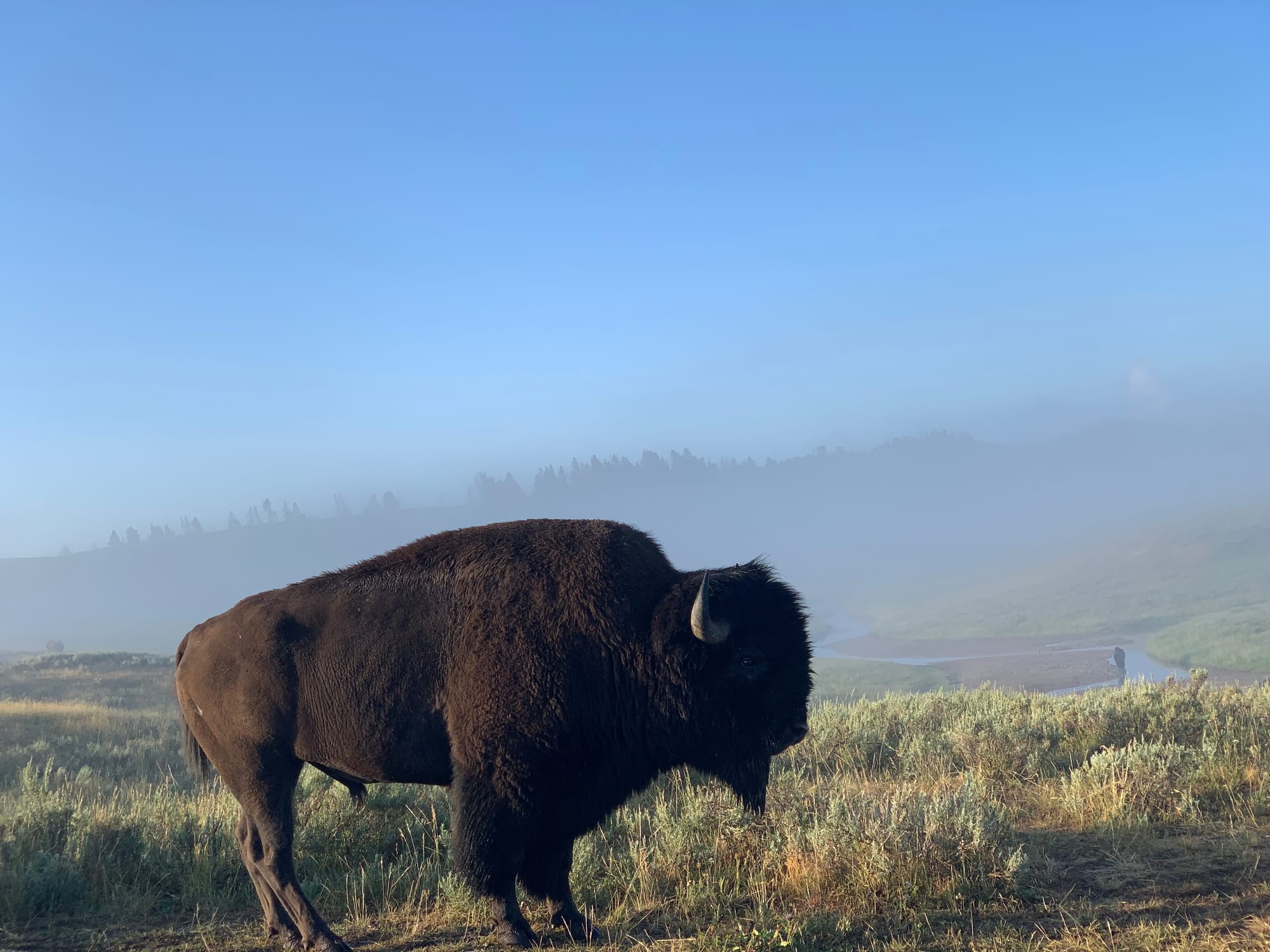
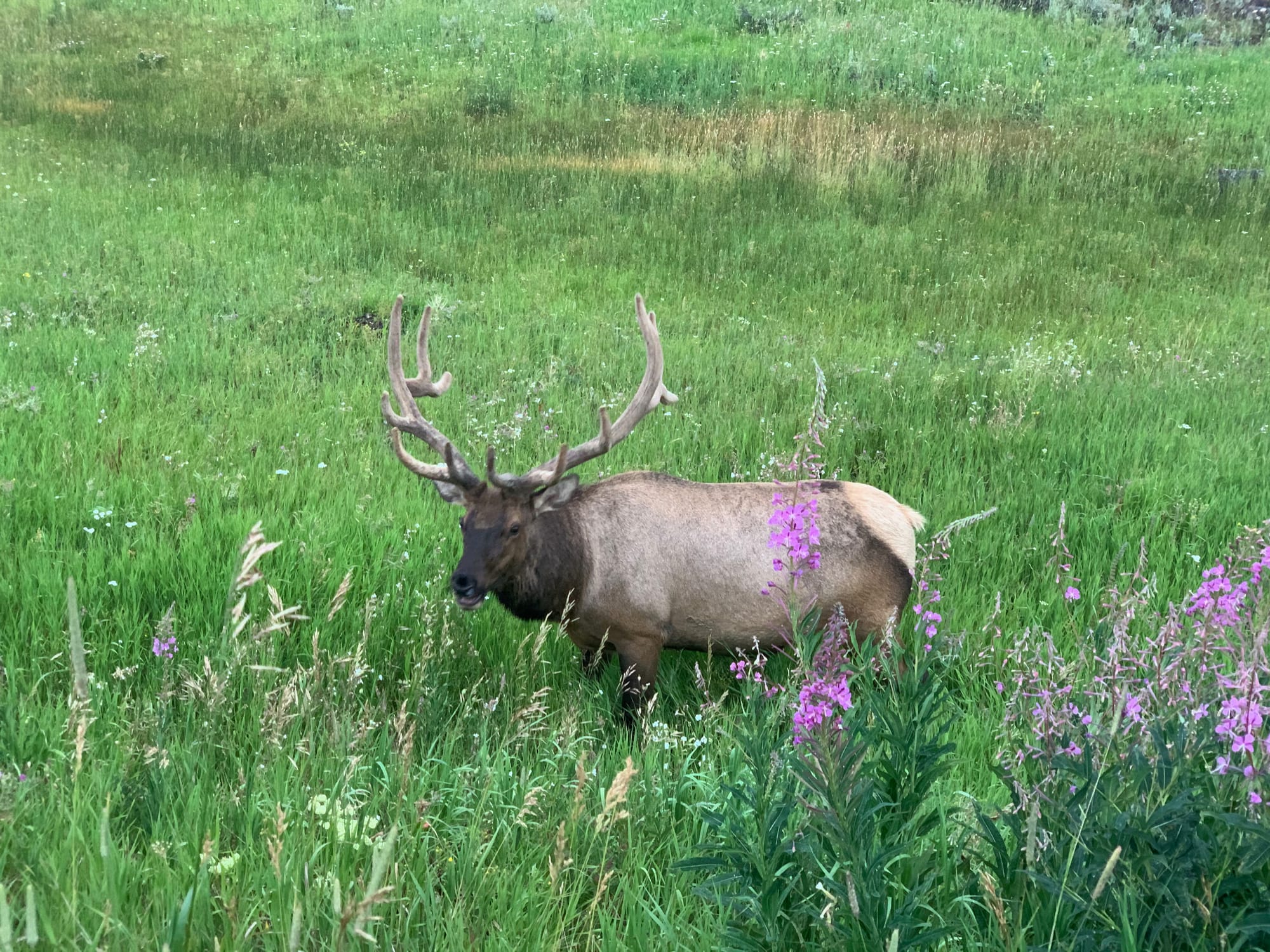
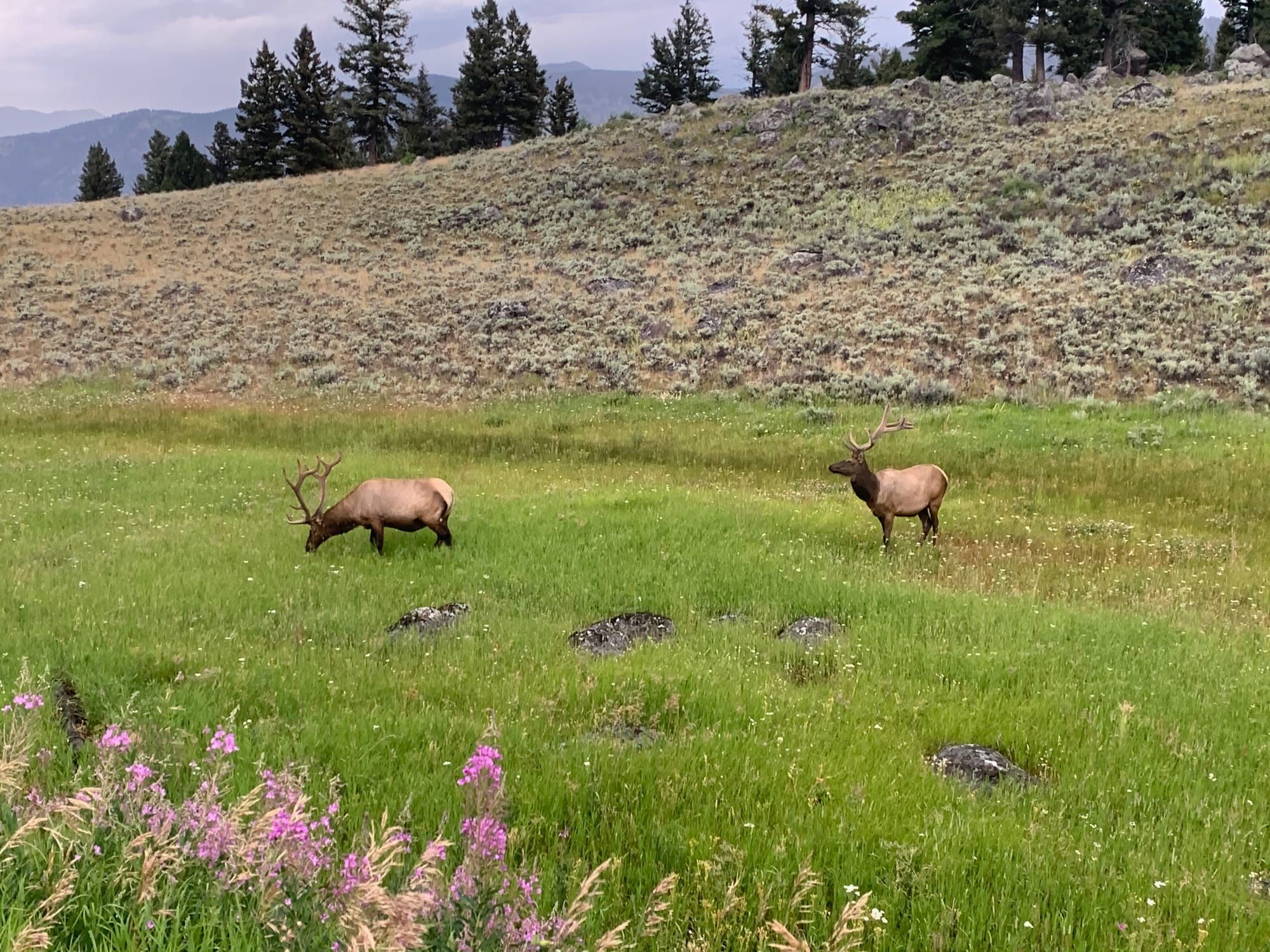

A glimpse into Yellowstone's diverse wildlife, from bears and bison to elk and the small but mighty weasel, thriving in their natural habitat.
Best Times for Wildlife Spotting:
To maximize your chances of seeing Yellowstone’s incredible wildlife, it’s essential to know the best times and locations for spotting different species.
Best Times for Wildlife Watching:
- Spring (April to June): Spring is a great time to visit Yellowstone for wildlife watching. As the snow melts, animals become more active. Bison and elk calves are born during this time, and bears emerge from hibernation. Wolves and coyotes are also more active, often seen hunting or scavenging.
- Fall (September to November): Fall is another excellent time for wildlife viewing, particularly for spotting large mammals. The elk rut occurs in September, and bears are busy feeding before winter hibernation. The fall colors also provide a stunning backdrop for photography.
- Early Morning and Late Evening: Regardless of the season, early morning and late evening are the best times for wildlife watching. Animals are more active during these cooler parts of the day, and you’ll also encounter fewer crowds.
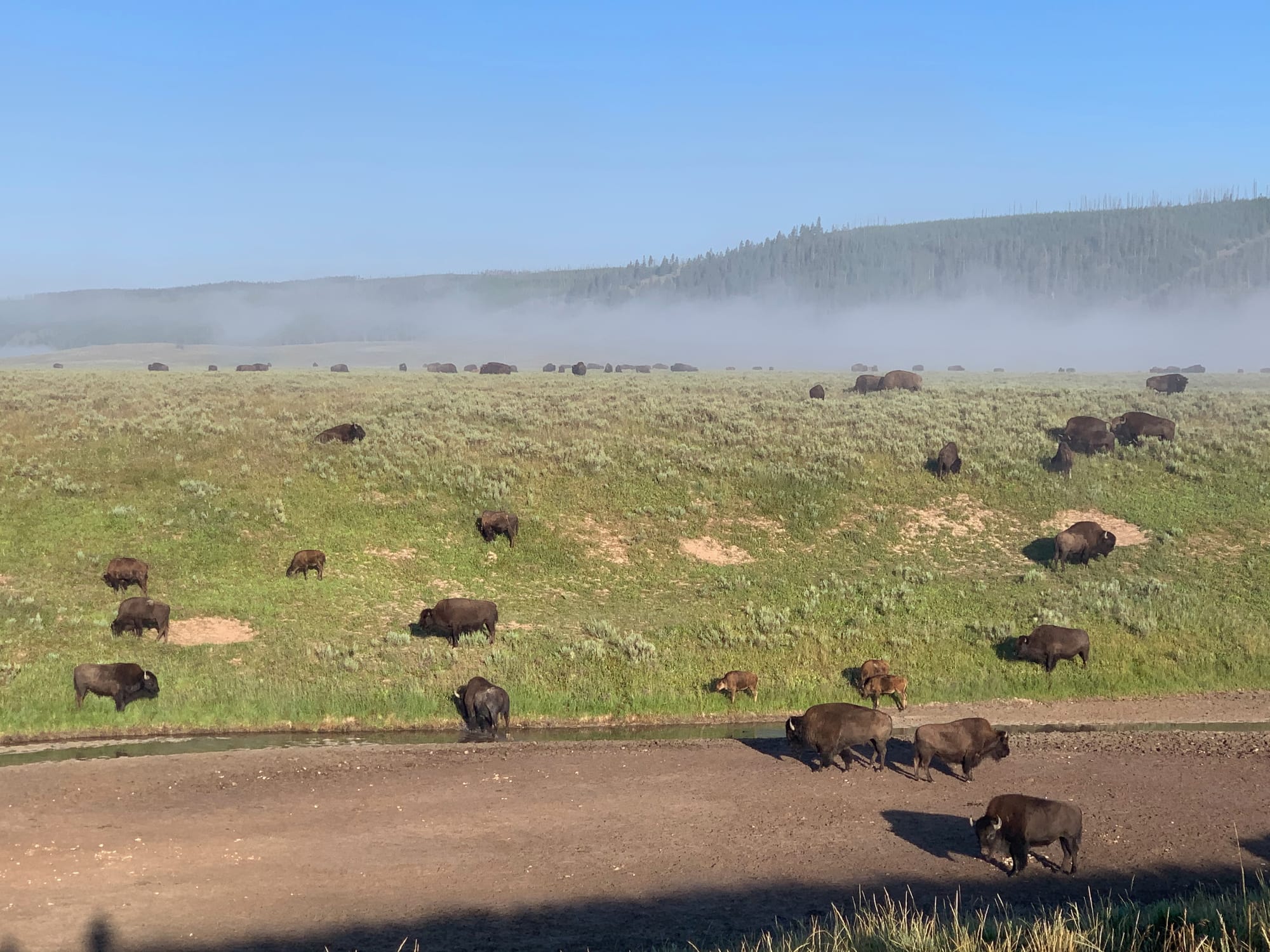
Best Locations for Wildlife Watching:
- Lamar Valley: Often referred to as "America's Serengeti," Lamar Valley is the premier destination for wildlife viewing in Yellowstone. This area is particularly famous for its wolf sightings, but you can also spot bison, elk, grizzlies, and more.
- Hayden Valley: Another excellent location for wildlife watching, Hayden Valley is known for its large herds of bison and elk. It’s also a good spot to see grizzly bears, especially in the early morning or late evening.
- Mammoth Hot Springs Area: The Mammoth area is a great place to see elk, which often roam the lawns of the historic Fort Yellowstone. During the fall rut, this area is particularly lively with bugling elk.
- Tower-Roosevelt Area: This region offers a variety of wildlife, including black bears, bighorn sheep, and pronghorn. The scenic drive between Tower and Roosevelt is especially good for spotting animals.
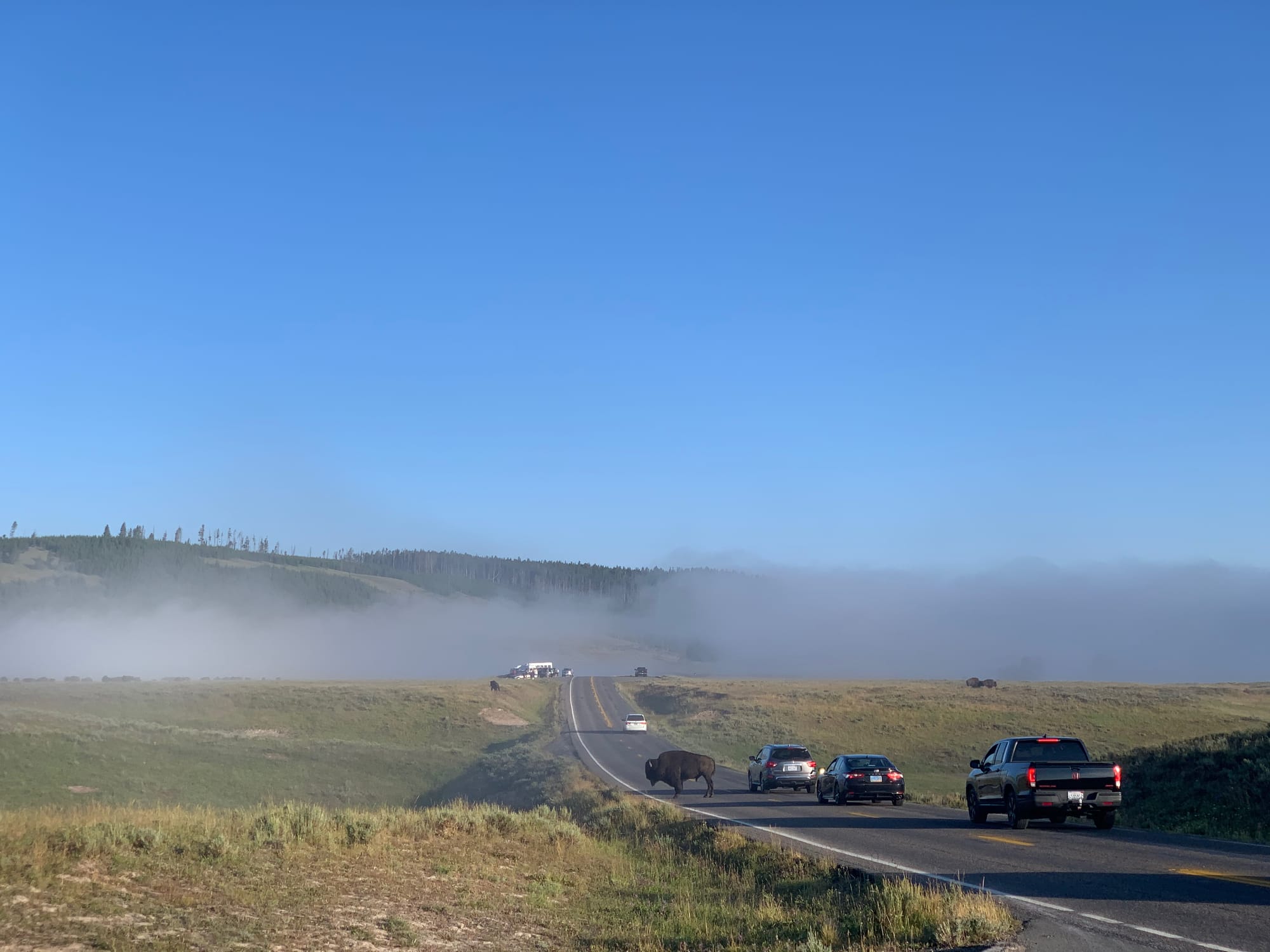
A serene morning in Yellowstone National Park as bison roam the misty plains, sharing the roads with early travelers.
Conclusion
Yellowstone National Park offers some of the best wildlife watching opportunities in the world. Whether you’re hoping to catch a glimpse of a wolf pack in the Lamar Valley, watch bison graze in Hayden Valley, or hear the bugle of an elk in Mammoth, the park provides endless opportunities to connect with nature. By visiting during the right seasons and times of day, and knowing where to look, you can maximize your chances of experiencing the diverse wildlife that makes Yellowstone so special. So grab your binoculars, pack your camera, and prepare for an unforgettable adventure into the wild.



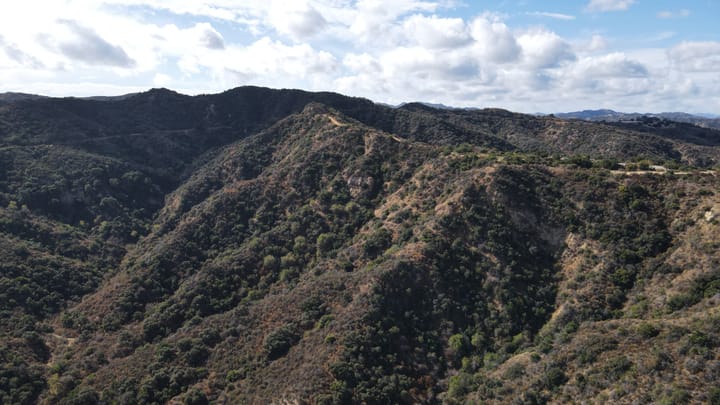
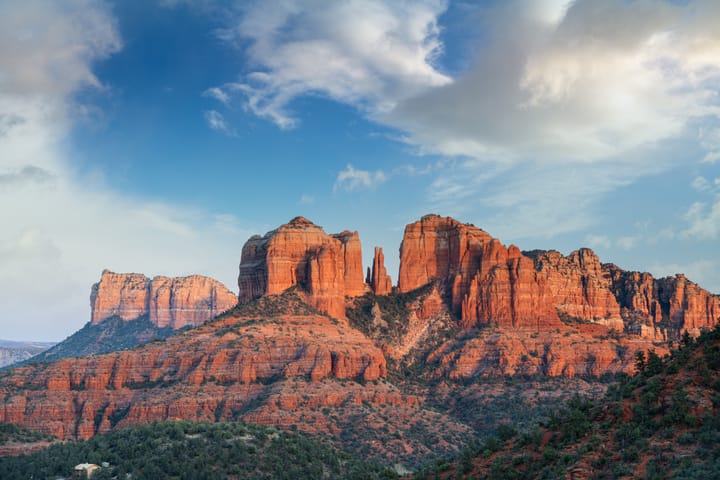
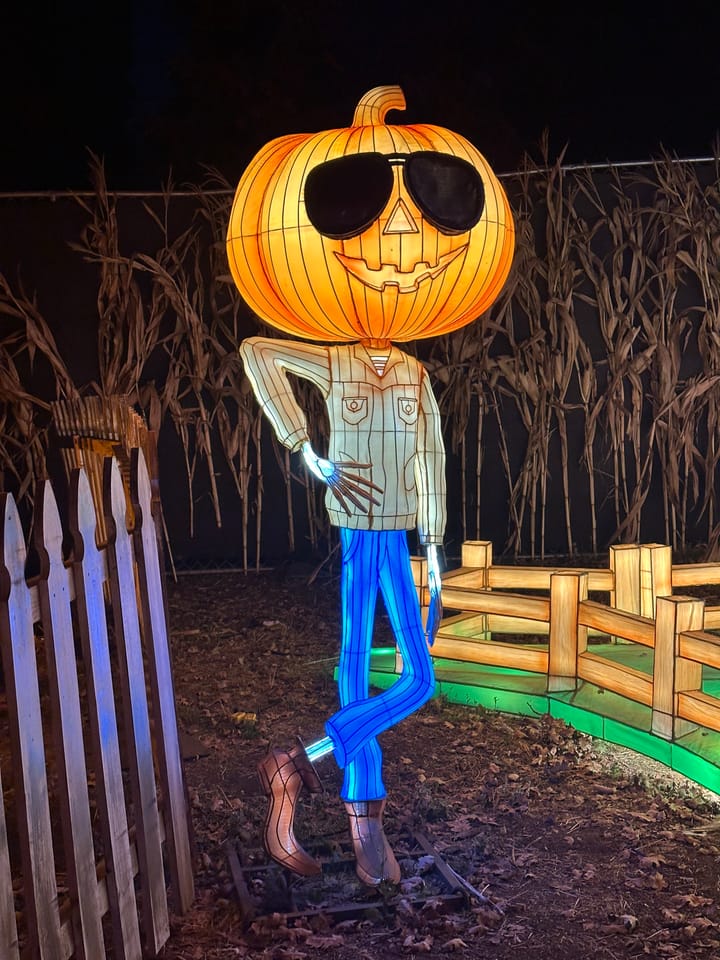
Comments ()